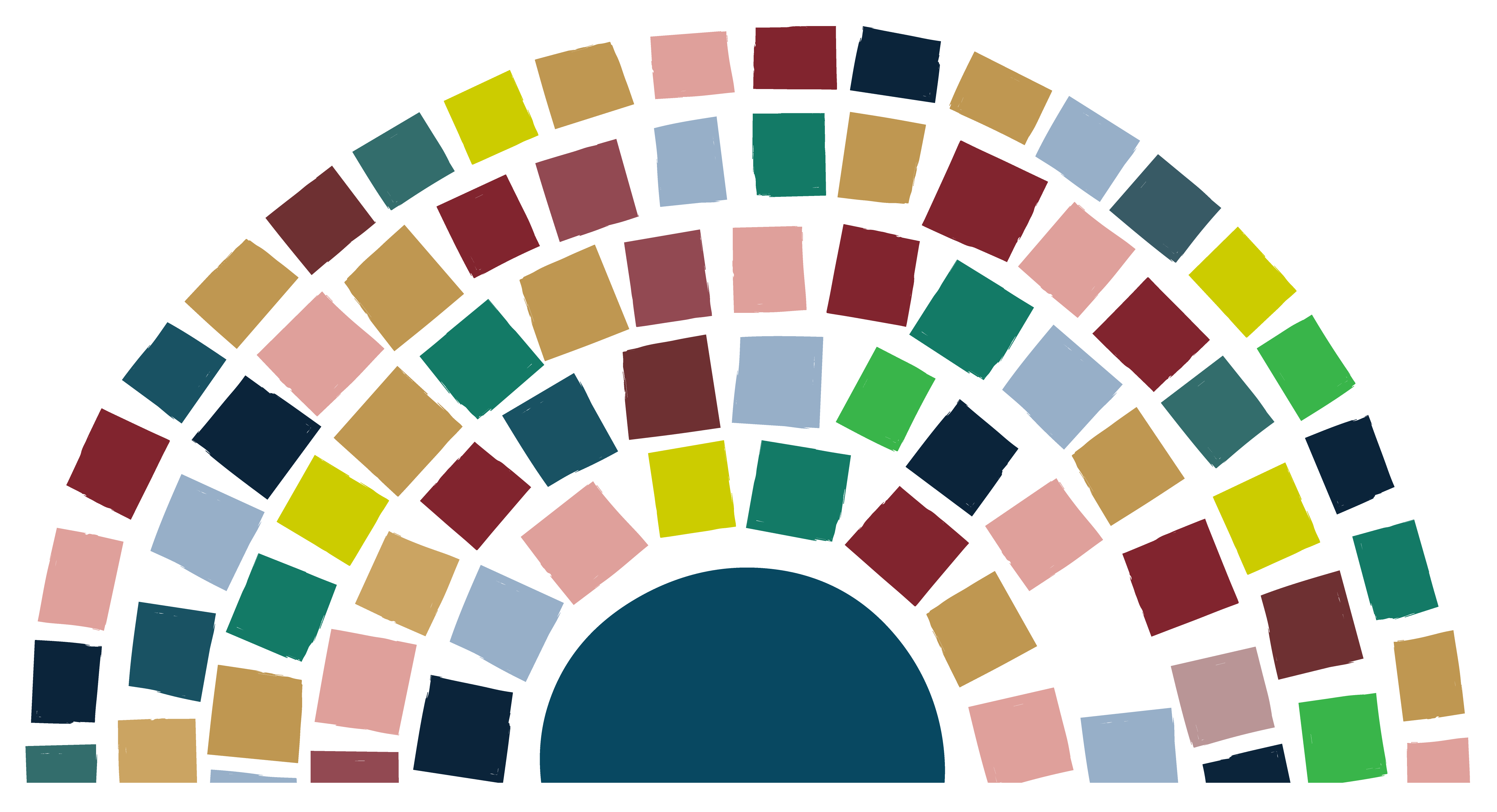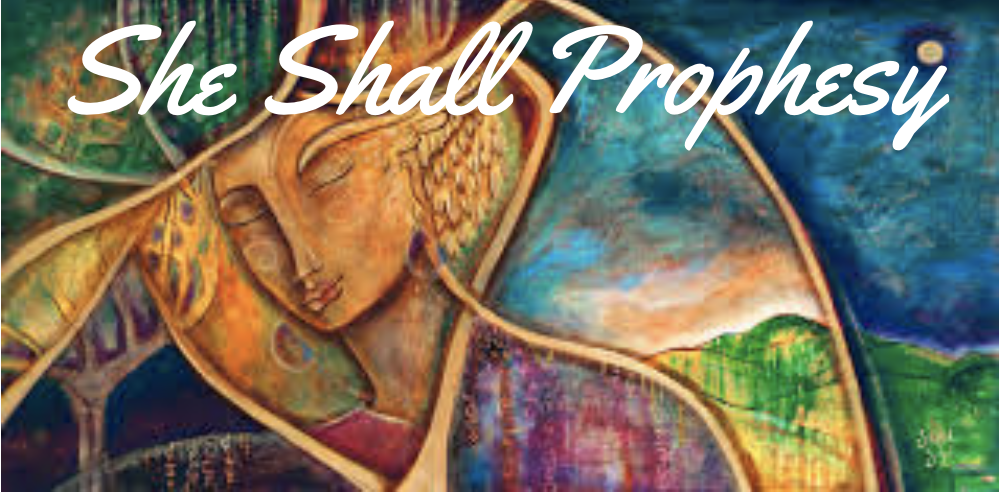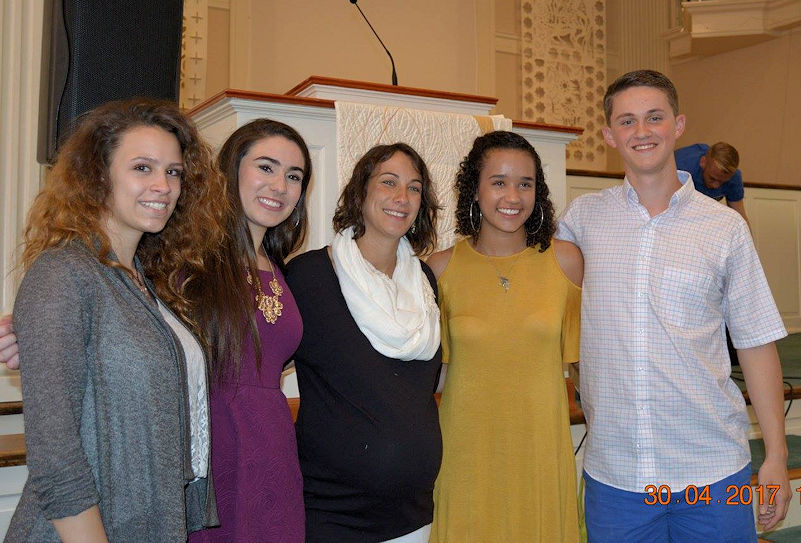Stuck in the Middle with You and Jesus
by Michael Usey
Luke 24:13-32 (NRSV)
This Monday we bought Ann a new used car, a pretty bronze-colored 2008 Honda CRV. Her speedy Civic was hit and totalled a month ago by a guy running a yellow light on Friendly. Ann was fine; I was more shaked up than she. This week Ann was at work on Monday when I picked up the car, which had no license plates, not even a dealer temp one. I drove it to the DMV to pay the tax and title and get new plates. As it turned out, I didn’t have the correct proof of insurance form, so no new tag for me that day. I had to referee two high school soccer games in Uwharrie, 40 minutes away. So I did something illegal: I put the tag from our now-totalled Honda Civic on our newly acquired Honda CRV, and hoped for the best. Several police and sheriff cars drove past me on the way there and back; I drove there and back without incident, and secured the correct new tags the next morning. I did not once consider that I might not survive contact with authorities. This is, of course, my white privilege.
Last week I preached a sermon that said that belief in resurrection is at the core a conviction that death and evil will not win in the end, that they are not the last word. Then this week seemed to do everything possible to prove me wrong. As Michele Norrris tweeted, “We interrupt the coverage of the shooting of a 13-year-old boy that interrupted coverage of a traffic stop shooting of a 20-year-old man that interrupted coverage of the trial for the killing of George Floyd for the news of 8 people killed at Fedex in Indianapolis.”
Safe to say, no one likes to be pulled over by police. But for Black and brown people, there is extra dread and fear and danger. The shocking video of a Black Army officer in uniform being held at gunpoint and pepper-sprayed by police during a traffic stop in Virginia, and the fatal shooting of another Black man by police in Minnesota who stopped him because of expired tags on his car, once again spotlight problems in how police treat people of color and the need for fundamental changes in how police operate.
The release of footage showing how Caron Nazario was mistreated by police in Windsor, Va., and the killing Sunday of Daunte Wright in a suburb of Minneapolis coincide with the ongoing trial of the former police officer charged with the murder of George Floyd, a case that ostensibly prompted a national reckoning on racial inequities in policing. Has nothing been learned from that tragedy? Why are these things still happening?
Imagine the terror of every parent of a child of color–the sleeplessness of every parent when their teenager is on the road past dark. It was Rydell Harrison, who was my colleague here at College Park for many years, who awakened me (woke me) to the depth of the conversations that he and Monica had to have regularly with their Black sons about how to survive a traffic stop. I taught my three what to do when stopped, but I never once considered that they might not survive one.
Let me just say too that the media needs to quit showing these deaths on TV on repeat. More than two weeks after a Chicago police officer shot and killed 13-year-old Adam Toledo, the police released a graphic video, showing the police officer chasing Adam through an alley, ordering him to stop and show his hands. Adam appears to stop at the opening in a fence, turn and raise his hands as the officer fires once, striking him in the chest. Sure, we need to make more people aware how common violence is against POC, but these images of the murder of POC play like pornographic snuff films. Our young people should not see what is being done to Black bodies–which is already too prevalent in US culture.
So we begin this morning in some national grief, coupled with more mass shootings that are hardly a blip on our radar, but continue to break off pieces of our souls. Not only grieving the continual killing of POC by persons pledged to serve and to protect, and the murder of two trans women in Charlotte, but also the 565,000 deaths to covid that are increasing at more than a thousand a day. We find ourselves in much the same emotional space as the two disciples on the road to Emmaus on Easter afternoon, facing yet another grief tsunami.
The 24th chapter of Luke’s gospel begins there on the precipice of life and death, that gingerly balanced place called “early dawn,” where dark and light spar with each other before light finally emerges victorious. The 23rd chapter ends in full darkness, with the death of the one they thought would save them, the tomb closed up, the quiet Sabbath surrounding those who dressed his body. Hope was lost in the death-filled darkness. Chapter 24 begins with just a glimmer of hope as the morning sun rises over the empty tomb.
The chapter falls neatly into three sections. It starts with that Easter morning story of the empty tomb and the beings in dazzling clothes who send the women away with the news. The chapter ends out in Bethany, with a blessing from Jesus as he is carried up from earth to heaven. (I’ve always wondered if Jesus said to his disciples as he ascended, “Hey, I can see my house from here!”)
But here in the middle is the story of these two travelers who set out for Emmaus. Luke doesn’t tell us why they’re going, what their agenda is, why they’ve left Jerusalem. Maybe they’ve left in fear, maybe in despair, maybe because they don’t know what to do now that everything has changed. On the road they meet this stranger, and I can’t help but wonder if he seems even a little familiar to them, like maybe they’ve met him somewhere before but can’t quite place it as they walk along. So the three of them talk as they walk, and the two travelers don’t seem to understand what has happened, and the stranger tries to tell them. But before they know it they have arrived where they are going. It is late, so they invite him to come in and eat with them and he accepts, though it turns out that he may have been the one doing the inviting all along.
Surely, when they sit down to eat, it starts to come back to them, where they had met this stranger before. Surely, they start to remember other meals they’ve shared together–that bread-and-fish picnic when the 5000 were fed, or that last supper in an upstairs room just days before, when they gathered, frightened, when he spoke of things they did not understand and did not want to hear, when he passed the cup and broke the bread. Surely, it starts to come back to them.
It’s in the breaking of the bread that does it. It’s when he breaks the bread that they finally remember where they have met this man before. It’s when he breaks the bread, when the flesh of the bread is torn and the crumbs fall to the table–it’s then that their eyes are finally opened and they can see what’s really happening. It’s when he breaks the bread that they are brought back from the shadows of death and they realize that life has won.
It seems to me that the church lives here in the middle of this chapter–between the abandoned linens of the empty tomb and the ascension to heaven. We live in the middle part, on the road to Emmaus. I know we celebrate the birthday of the church on the fiery festival of Pentecost; but I think the church is born here, broken open here with the breaking of the bread.
We weren’t there that Easter morning. We didn’t see the rolled-away stone or hear the women tell the story. And the great mystery of the afterlife lies far off–in comprehension, at least, if not in time. So here we are, in the middle, stuck in the middle with you and you and you. That’s where the church lives–gathered around the table, telling old, old stories, sharing the feast. It’s in the scriptures and the table that the story breaks open for us, and we realize again that life has won.
Sometimes, though, if we are honest, that breaking open means not just rejoicing in the triumph of life, but also opening our eyes to the broken places in our world. Woke is a slang term that is a gift from a dialect called African American Vernacular English. In AAVE, awake is often rendered as woke, as in, “I was sleeping, but now I’m woke.” ‘Woke‘ is also used as a byword for social awareness. This usage was popularized by Erykah Badu’s 2008 song “Master Teacher,” via the song’s refrain, “I stay woke.” Living with eyes opened, living woke (if an old white baptist may kipe that term), means recognizing that this place we live in, here in this middle time between the empty tomb and the rise to heaven, is a place that is sometimes as filled with pain and grief as it is with life and love.
So maybe the church becomes the place where those truths are broken open. With eyes open, we can see that there is too much injustice in the world, too much pain. With eyes open, we can see that there are too many hungry and too many left out in the cold, too many strangers still not welcome at the table.
During this hard time, we need to remember that Christianity is built for hard times. When life knocks us down, we remember what we believe. This is the time to take Jesus seriously. Frederick Buechner writes, “We want to know who Jesus is before we follow him, and that’s understandable enough, except that the truth of the matter is that it’s only by first following him that we can begin to find out who he is.” During a pandemic, we learn whether we are really following Jesus. If we ever wondered how we would act during a crisis, we know now.
In 1527, there was an epidemic in Germany. It’s ten years after the Protestant Reformation began, so Catholics and Protestants blamed each other. Martin Luther responds with a pamphlet titled “Whether One May Flee from a Deadly Plague.” Written almost 500 years ago, it sounds more recent: “I will ask God mercifully to protect us. Then I will fumigate, help purify the air, administer medicine and take it. I will avoid places and persons where my presence is not needed in order not to become contaminated and thus perchance inflict and pollute others and so cause their death as a result of my negligence. If (I should die) I have done what God has expected of me and so I am not responsible for either my own death or the death of others. If my neighbor needs me however I will not avoid place nor person but will go freely.” Luther thought that an epidemic is exactly the time to act like a Christian.
And maybe the church at its best lives in the midst of those hard truths, challenges the powers that threaten to pull us into darkness, and offers little glimpses of the light. Micro kindnesses can shift away from macro despair.
Friday afternoon I stopped by our church buildings and found Lin working and Jerry Elkins playing with Riah and Maryn on our playground; all three were laughing with delight. It reminded me of a morning so many years ago when I first realized I was in the right place. One Sunday morning 27 years ago, we were gathered in our fellowship hall (remember that place?) for a promotion breakfast, which we have every fall. We were drinking coffee, eating breakfast, catching up on news from the week and thinking about heading upstairs to Sunday school classes. There was a tiny commotion underneath one of the tables where I was standing, and I bent to look and discovered a tow-headed three-year-old playing Matchbox cars with one of the highly respected leaders of our congregation, who had crawled under the table in his church clothes, coat and tie included. (Can anyone guess who it was? I’ve told this story before. It would be easy to think it was Frank Kendall, a very Frank thing to do, but the Kendalls weren’t members yet. It could have Fred Scott too, but it was of course … Dan Cottrell.) They vroomed their cars up and down the floor, oblivious to the rest of us watching, both of them filled with the delight of playing with the other.
Maybe it’s a small thing, playing Matchbox cars under the table on a Sunday morning; but when I saw them there, I thought: that’s what church should be–a place where, even for a moment or two, life breaks open and joy abounds. Where in the midst of a world broken, people will crawl under a table to make a child feel welcome and loved.
When we do it right, that’s what church looks like: sharing meals around potluck tables, crying together at the funeral of a friend, lifting prayers in weekly worship, telling and re-telling the stories of scripture, working for justice, serving together for community and world, suggesting, sometimes loudly, sometimes gently, that maybe there might be another way to live.
That’s where the church lives, I think, in this world that is far too broken, offering little glimpses where grace breaks open and we can see that life just might win again.


